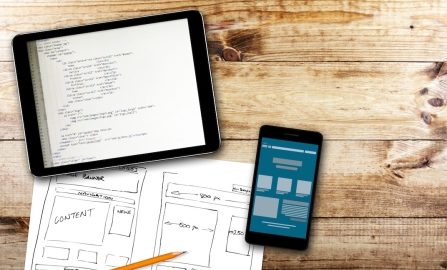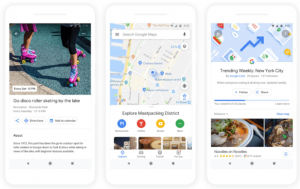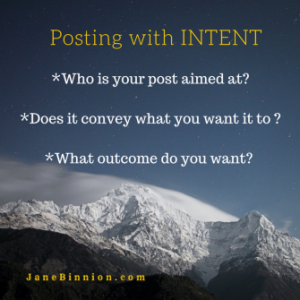
Website usability and positive user experience (UX) are essential to the success of any inbound marketing strategy. But wait, aren’t usability and UX the same thing? Not quite.
If you’re unsure about the differences between website usability and user experience, here’s an analogy:
Consider your ideal car, truck or SUV. No matter what type of vehicle it is, it’s primary job is to get you from point A to point B. In addition to it’s primary job of getting you places, vehicles can help you accomplish other desired tasks such as hauling things or people—in which case it would need adequate storage space or extra seating. Without these essential features, your vehicle isn’t very usable. Anyone who has ever tried to haul a mattress from point A to point B on top of a compact car can atest to that.
Website usability is the ability to accomplish a desired task on a website.
While a business website’s primary job is to deliver information and generate leads, without the essential features needed (accessibility, intuitive navigation, and aesthetically pleasing design) your audience may find your website as unusable as a Ford Pinto on moving day.
Continuing with the analogy, there are other attributes people consider in an ideal car, truck or SUV such as the shape, paint color, safety rating or roar of the engine. These features are less about the usability of the vehicle and more about how it makes them feel. They can feel cool in a flashy red sports car, powerful in a souped up 4×4 or safe in a crash-tested minivan. Driving a vehicle that doesn’t possess your desired attributes can leave you feeling underwhelmed—a poor overall experience.
When it comes to a company’s website, user experience (UX) is the feeling users have when seeking information or attempting to accomplish a task. Any business website that is intended to draw in prospects and convert visitors into leads should set out to provide a positive user experience that leaves them feeling good about their time spent on the website. Essentially, this means delivering the right information and the right content at the right time—and in a visually appealing yet easily digestible way. Without the essential features for a positive UX, your audience can be left feeling unsatisfied and will likely end up leaving the site to find information or services elsewhere.
This analogy can also help illustrate the way usability and UX overlap. Just because someone thinks a vehicle is usable—has the proper storage and seating for example—it doesn’t guarantee they would have a positive experience driving it. It may be an ugly shape or color that leaves them feeling embarrassed instead of cool. However, in order for it to be an ideal car, it must be usable or else it wouldn’t be considered an ideal car.
The same goes for usability and UX. Just because you have a highly usable website, it doesn’t mean your visitors will have a positive user experience. There’s more to UX than usability. However, you can’t provide a good UX without usability because your audience expects your website to be highly usable.
Okay, enough of the vehicle analogy. Understanding the difference between usability and user experience is important—especially when executing an inbound marketing strategy that relies on converting a constant flow of site traffic into leads.
Let’s take a closer look at the differences between website usability and user experience:
Ability vs. Emotions
Website usability is the ability to perform a desired task on a website. For a business’s website, this means the ability to find, read and understand content quickly and easily—on any browsing device—by navigating through an intuitive menu structure and skimming content.
User experience is the overall emotion felt when interacting with a company’s brand. This includes the feelings site visitors have when browsing and navigating a business’s website and goes much deeper than just the ability to find, read and understand content. The content itself plays a big role in providing a good user experience.
Good Usability vs. Good User Experience
In order to ensure good usability, a website needs to be as easy to use as possible. This can be ensured with an intuitive navigation structure and aesthetically pleasing design—such as simplicity, visual hierarchy and consistency. The goal is to limit obstacles between the site visitor and the site’s content.
In addition to having good usability, a positive overall user experience on a website requires a thorough understanding of the target audience in order to deliver the right content that will make them happy. It’s important to identify not only who they are, but what types of content they are looking for and what topics they’re interested in.
This is where usability, user experience and inbound marketing go hand in hand … in hand. The key to delivering quality content to your audience at the right time is to provide content for every stage of the buyer’s journey. Every persona that enters your website falls into one of three categories based on their interest level in your products or services: Awareness, Consideration, and Decision. All of these personas expect a highly usable website, but when it comes to providing a good user experience, it helps to greet them with content that is relevant and interesting to them specifically.
For example: A site visitor in the Awareness stage is not likely to go straight to pricing information or request a demo. First, they need to understand more about your product or service and even more about the symptoms of their potential business problem or need. Providing them with educational content that helps them through this stage of the buyer’s journey—and the following stages—will set the tone for a great user experience overall.
Digital & Social Articles on Business 2 Community
(42)





